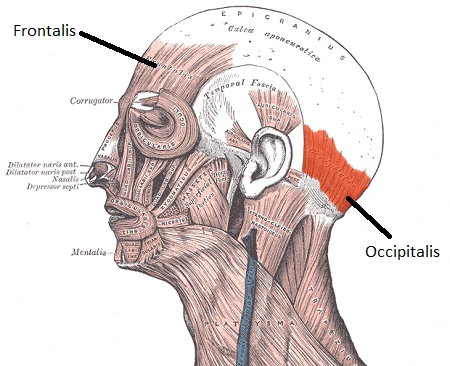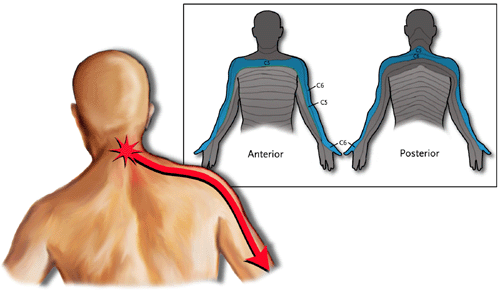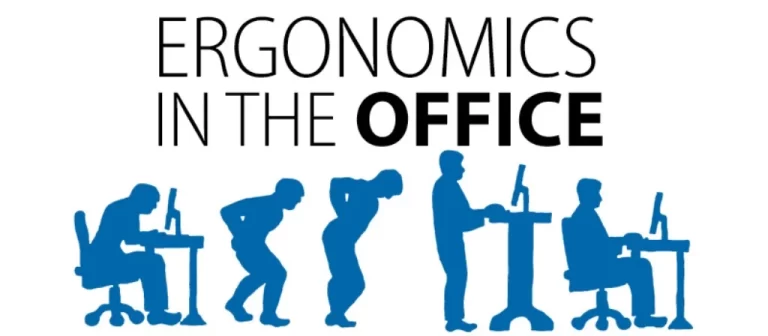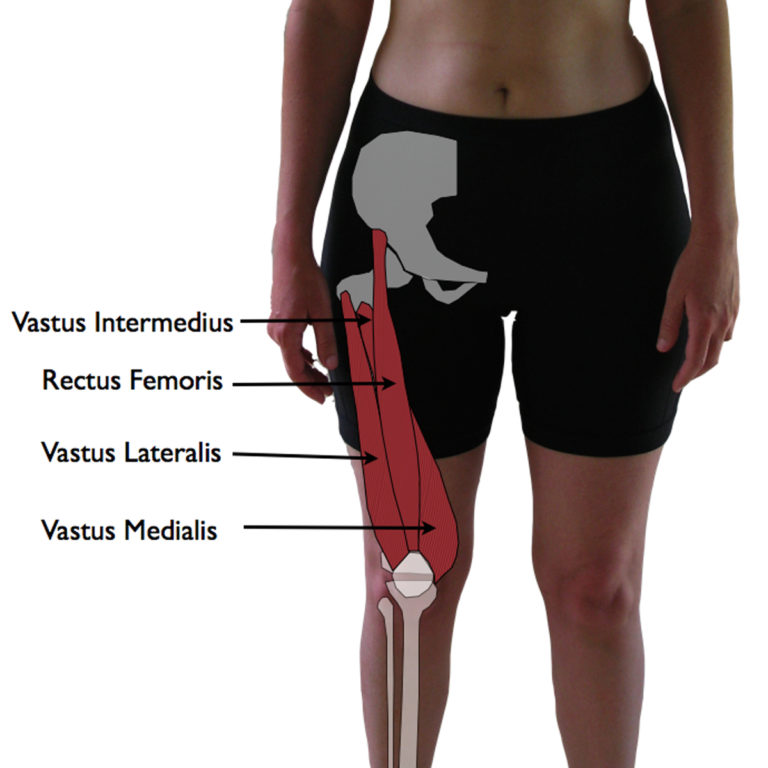Rhomboids muscle stretching exercise
Table of Contents
What is Rhomboids stretch?
- Rhomboid stretch is the best exercise to increase flexibility as well as Mobility of the shoulder girdle. This stretch is easy to perform as a Home exercise the patient can try it at home in the early morning.
- Rhomboids are deep muscles situated in the center of the back between the spine & the scapulae. This has two parts, rhomboids major & rhomboids minor. These muscles assist in the elevation as well as rotation of the scapulae.
- They also, drag the scapulae toward the spine for good posture. If the patient has tight or weak rhomboids, he might develop a slumping posture, or feel pain in between the scapulae. Stretching of the rhomboids leads to improvement in the condition.
What is the importance of the rhomboid stretch?
There some importance to doing rhomboid stretching, those are:
- Improve shoulder flexibility & mobility.
- Improve the posture.
- It provides stability to the shoulder girdle & scapula. This also drags the scapulae together.
- Stretching increases blood circulation in that area.
- This improves the forward head posture.
- Decrease the strain on the rhomboid muscle.
What are the types of rhomboid stretching?
There are various types of stretching:
Rhomboids stretch 1:
- How to do this stretching exercise: Take the standing position & the feet around hip-width apart.
- Now extend the arms in front of you & clasp each other.
- Now pull the shoulders forward like reach out until you feel the scapulae pulling away from each other.
- Then, gently forward and bend the head to feel the deep stretch.
- Hold it stretch for 20-30 seconds, and repeat for 3-4 stretches.
- Now switch the hands, so the bottom one is up & the other is down, and clasp to feel stretched.
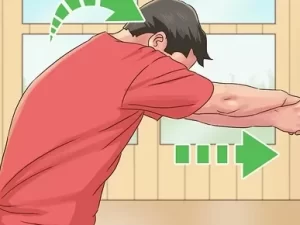
Rhomboids stretch 2:
- How to do this stretching exercise: Take the sitting position on a flat, level chair.
- Now move at the edge of the chair, so the feet touch the ground and the knees are perpendicular.
- Now spread the legs slightly more than the hip-width apart.
- Reach over & grasp the right ankle with the left hand.
- With the right hand, press into the left elbow crease until you feel the gentle stretch between the scapulae & the spine on the left side.
- Hold this for 10-15 seconds, deep breathing. Then come back to the starting position and repeat for 2-3 repetitions.
- Now switch the hand and do it on the left side.
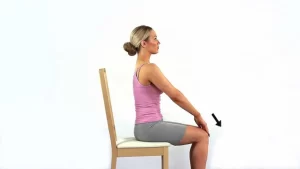
Rhomboids stretch 3:
- How to do this stretching exercise: Take the standing position, the feet are hip-width apart.
- Now extend the hands forward at shoulder level & clasp the fingers with others and rotate the arms inward, so the palms face away from the body.
- Reach out forward until you feel a stretch between the scapulae.
- Hold it and repeat for 2-3 repetitions.
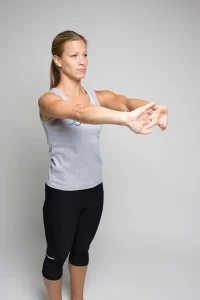
Rhomboids stretch 4:
- How to do this stretching exercise: Take the sit on the chair. The back is straight & the feet touch the floor.
- Now cross the arms at a forearm level.
- Then, move forward to bending at the waist level.
- And the arms crossed and the hands move away from each other.
- When the patient feels a gentle stretch between the scapulae, stop there.
- Hold the position for 10-15 seconds and repeat.
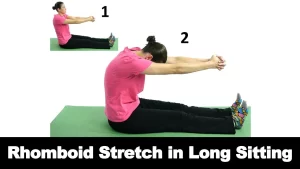
Rhomboids stretching has some variations:
- Doorway stretching
- Cross-arm stretch
- L- arm stretch
Doorway stretching
- How to do this stretching exercise: Stand straight with the right side to a door that you want to stretch.
- Reach the right arm closest to the door forwards & grab the door frame at chest level.
- The right arm should rotate inwards so that the right thumb points downward.
- Keeping the right arm straight, move the body around to look at the door.
- Avoid the body leaning or the shoulders hunching.
- The patient should feel a stretch between the spine & both the scapulae.
- Hold the position for up to 10-20 seconds and repeat 2-4 times.
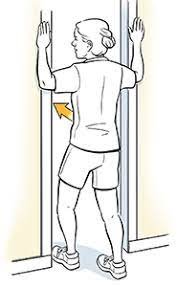
Cross arm stretch
- How to do this stretching exercise: Stand with the feet around shoulder-width apart, then pull the left arm across the body while also pulling the scapula back.
- When the patient feels the mild stretch, stop there & Hold the stretch for 15- 30 seconds.
- Perform 3 repetitions of the stretch, then switch and do the right arm.

L-arm stretch
- How to do this stretching exercise: Lie on the stomach & stretch the left arm underneath the body across the chest, palm facing up.
- Use the shoulder muscles to drag the chest down towards the floor as down as you can without pain.
- Hold the stretch for 20-30 seconds, then release.
- Move inward & outward of the stretched position for 8-10 reps, holding for 20-30 seconds each time.
- Then switch & do the same stretch with the right arm.
- The stretch may feel uncomfortable at first, but do it if you find a comfortable position. For example, the patient may find it easier if you bend the right leg opposite the left arm across the chest to open up the hips. And opposite on another side.
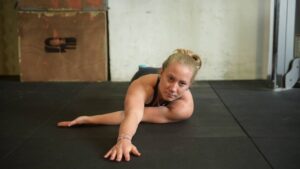
Common mistakes the patient can avoid while the stretch
There are some common mistakes the patient needs to avoid while the stretch:
- Doing held stretches before the patient does exercise: The patient need to avoid static stretches before working out but performing this could work against you. It may be due to static stretching before a workout increases whole muscle fatigue, which leads to decreased performance and could increase injury risk. Instead, do static stretches after the activity.
- Thinking the patient may need to feel pain to advantage: Knowing the limits gives you the benefit. if the patient feels any pain or discomfort throughout the exercise then release the tension & stop there. This may cause you injury & not beneficial at all. So when you feel mild or gentle stretch that gives you the perfect advantage.
- Hold time of a stretch is not long enough: Make sure that the holding time of the stretch is long enough to allow the brain to give a signal to the muscle to relax & lengthen. This time should be 20-30 seconds enough, the patient can increase if the area is too tight.
- Holding the breathing as you do a stretch: The patient may be so concentrated on stretching that you hold the breath. It can decrease the amount of oxygenated blood running to the muscles, which may lower the ability to stretch. This can also decrease the amount of lactic acid in the blood, so the patient feels pain while the stretch. So make sure that the breathing pattern should be normal.
- Using the wrong technique: The patient has to use the right technique for good and effective stretch, otherwise, this could make an injury to the muscle.
- Bouncing while stretching: Bouncing while stretching gives the signal to the brain to tighten the muscle, which may lead to the pulled muscle. Instead, avoid the desire to bounce & simply hold the stretch for the recommended time, remember to breathe deeply & continually during the period.
- An injured muscle stretching: Sometimes, some types of stretching after the injury are beneficial, stretching the injured muscle can prolong & delay the healing response. Instead, adjust the stretching muscles to the injured body part so they do not get stiff as you give relaxation time to the injured area. Work with the physical therapist so they measure to promote healing & avoid damage.
FAQ
What causes tight rhomboids?
The rhomboid muscle strain or even spasm is usually caused by overuse of your shoulder and arm. This can happen from Overhead activities, such as serving a tennis ball or reaching to put objects on a high shelf.
What happens when the patient has weak rhomboids?
If the rhomboids are weak or even injured, the person might experience chronic back pain. “If the patient strengthens the shoulders and pectoral muscles but the patient does not balance that by strengthening your rhomboids, you risk impingement in the shoulder,
What causes rhomboid trigger points?
Excess muscle tension in the pectoralis muscles and inhibition of the serratus anterior is common and will often overload the rhomboid muscles. This relationship allows trigger point activity to spread easily between these muscle groups.
Can chiropractors help with rhomboid pain?
Done regularly, these recommendations should assist to reduce pain as well as improve the tone of the rhomboid muscles. If the pain stays the same or worsens, this is important that you have it evaluated by a chiropractor. Spinal dysfunction may also cause these muscles to become problematic.
What does the rhomboid strain feel like?
Rhomboid pain is labeled as pain in between the shoulder blade and the spine (interscapular pain) that may even refer to the base of the neck or down the middle of the back.

